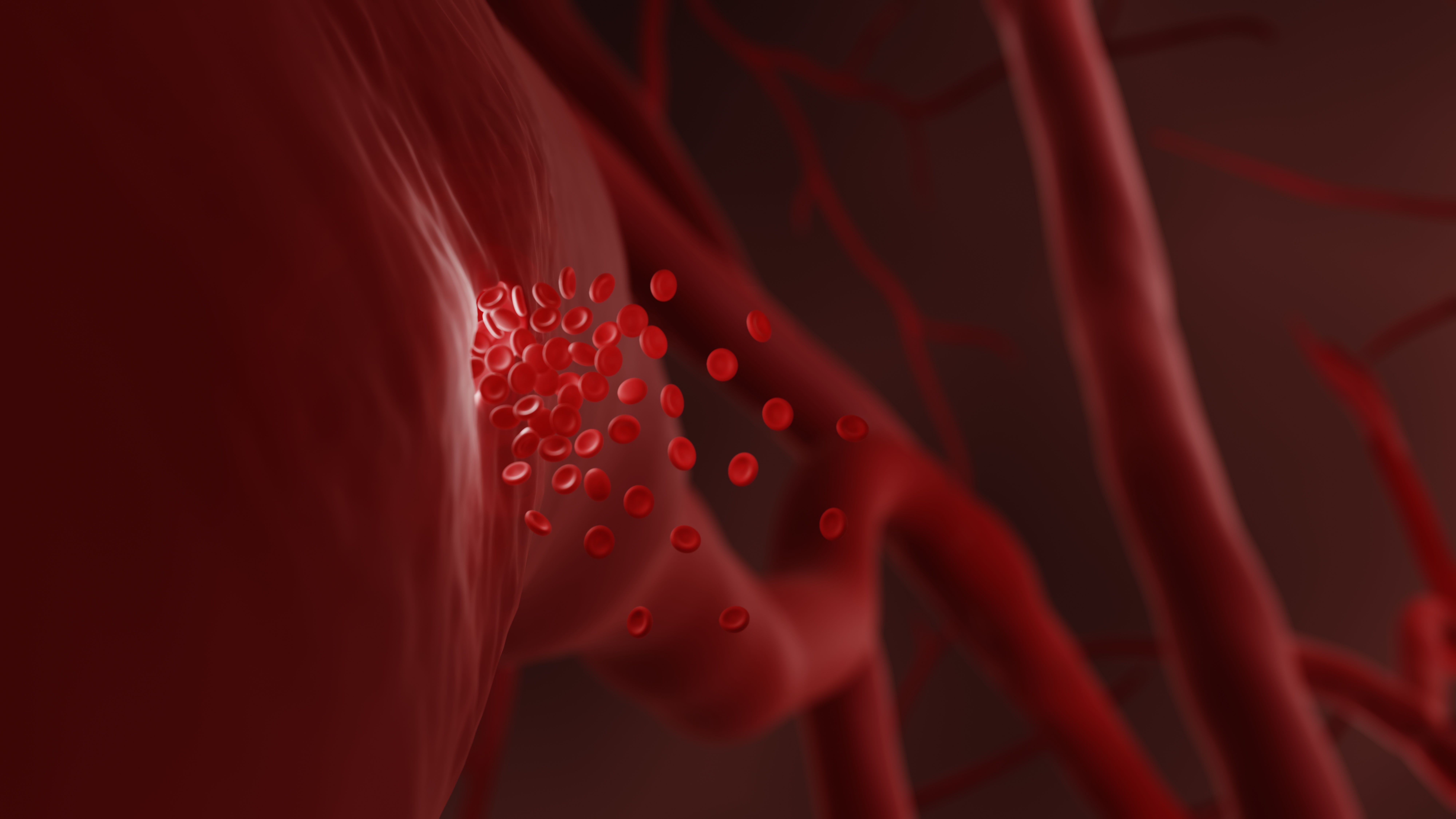- Center on Health Equity and Access
- Clinical
- Health Care Cost
- Health Care Delivery
- Insurance
- Policy
- Technology
- Value-Based Care
Immunosuppressive Therapies Shown to Significantly Impact Remission in Acquired Hemophilia A
A single-center, retrospective study demonstrated the major success of immunosuppressive therapies in contributing to complete remission in patients with acquired hemophilia A.
Immunosuppressive therapies (ISTs) have showed substantial promise in the management of acquired hemophilia A (AHA) due to their ability to influence complete remission (CR) rates in patients, according to a study recently published in Research & Practice in Thrombosis and Haemostasis.
Internal Bleeding Event Concept | Image credit: Artur - stock.adobe.com

AHA affects approximately 1.5 million individuals per year, with disease prevalence increasing with age. Deficiencies in antibody neutralizing factor VIII (FVIII) cause this rare bleeding disorder and affected patients endure extreme episodes of bleeding, either spontaneously or after surgery or trauma. Coinciding with this disorder, patients often endure underlying conditions such as infection, certain malignancies, autoimmune diseases, and more. The lack of FVIII in these individuals contributes to extended activated partial thromboplastin time (aPTT) and positivity to inhibitors of FVIII. Due to all of these factors, timely and appropriate interventions to control their bleeding and eradicate inhibitors is crucial for improving treatment outcomes in patients with AHA.
The authors of the present study note the scarcity of large-scale studies in AHA, in part due to its rarity. This lacking awareness and, as they add, lack of capacity to do coagulation laboratory assays in these patients can be a great barrier in the early diagnosis of AHA. To better understand the disease, the researchers conducted a study to expand knowledge on the clinical characteristics, prognoses, and treatments of AHA, with the hopes of determining effective treatment approaches.
Between July 1997 and December 2021, data were retrospectively reviewed in patients with AHA who received their diagnosis and were treated at the Blood Disease Hospital of the Chinese Academy of Medical Sciences. Included patients were followed until March 2022 at the researchers’ center. Participants underwent inhibitor level and factor activity tests until they achieved CR. Following CR, these tests were conducted again at 3, 6, 12, and 18 months. Furthermore, patients had annual assessments, as well as assessments following any bleeding episodes. Adverse events (AEs) such as these were monitored until patients completed IST. Bleeding scores were additionally retrospectively evaluated (normal ranges: 0-5 in adult female, 0-3 in adult males, and 0-2 in children).
A total of 165 patients with AHA were enrolled. The authors mentioned that over 75% (n = 126) of patients were idiopathic and 23.6% (n = 39) endured associated diseases such as autoimmune diseases (n =12), malignancies (solid tumors, n = 8), infections (n = 16), and pregnancy (n = 3). A severe FVIII deficiency was observed in just over 49% (n = 81) of patients (FVIII:C ≤ 1 IU/dL) and just over 7% had a mild deficiency (FVIII:C > 5 IU/dL). Also, over 52% of patients registered a high FVIII inhibitor titer (≥15 BU/mL) and over 47% had a low titer (<15 BU/mL).
Hemostatic therapy was given to 129 patients (78.2%). Bleeding control was attained in 46 of the 50 (80%) of patients who solely received 4-factor prothrombin complex concentrate (PCC) and in 12 of 13 (92.3%) who received recombinant activated FVII (rFVIIa).
IST was administered to 163 patients in an effort to eliminate their inhibitors. Rituximab-based interventions were the most commonly administered (80/163, 49.1%), and researchers observed a CR rate of 93.3% in these patients. These regimens included a dual therapy of rituximab and steroids or cyclophosphamide (CTX) and steroids, among others. Those receiving steroids plus CTX (n = 50) achieved CR at a rate of 85%, and those receiving only steroids (n = 22) exhibited CR at a rate of 82.4%.
Overall, there were 6 cases of relapse, 17 incidences of IST-related events that were reported, and 5 deaths that occurred due to severe bleeding events (n = 4) and recurrence of tumors (n = 1). The researchers found that CR outcomes were significantly affected by FVIII inhibitor titer of at least 15 BU/mL (HR, 0.55; 95% CI, 0.37-0.82; P < .05) and a bleeding score of 6 or higher (HR, 0.54; 95% CI, 0.33-0.89; P < .05).
Demonstrating that these levels of FVIII inhibitor titer and bleeding scores could predict poor responses to IST were significant findings. As the researchers reflected on these outcomes, they concluded by focusing on the substantial benefits of ISTs for patients with AHA. As research expands in this area, they encouraged future studies to utilize larger, prospective cohorts across multiple centers to establish more concrete results regarding prognostic factors in patient outcomes and the influence IST—or other modalities—in the effective management of AHA.
Reference
Yu D, Xue F, Liu X, et al. Acquired hemophilia A: a single-center study of 165 patients. Res Pract Thromb Haemost. 2024;8(1):102318. doi:10.1016/j.rpth.2024.10231
Dr Kathy Zackowski Discusses the Importance of Rehabilitation Research and Trials in MS
April 26th 2024Kathy Zackowski, PhD, National MS Society, expresses the inherent value of quality rehabilitation trials for broadening clinical understandings of multiple sclerosis (MS) and bettering patient outcomes.
Read More
Examining Low-Value Cancer Care Trends Amidst the COVID-19 Pandemic
April 25th 2024On this episode of Managed Care Cast, we're talking with the authors of a study published in the April 2024 issue of The American Journal of Managed Care® about their findings on the rates of low-value cancer care services throughout the COVID-19 pandemic.
Listen
Navigating Health Literacy, Social Determinants, and Discrimination in National Health Plans
February 13th 2024On this episode of Managed Care Cast, we're talking with the authors of a study published in the February 2024 issue of The American Journal of Managed Care® about their findings on how health plans can screen for health literacy, social determinants of health, and perceived health care discrimination.
Listen
